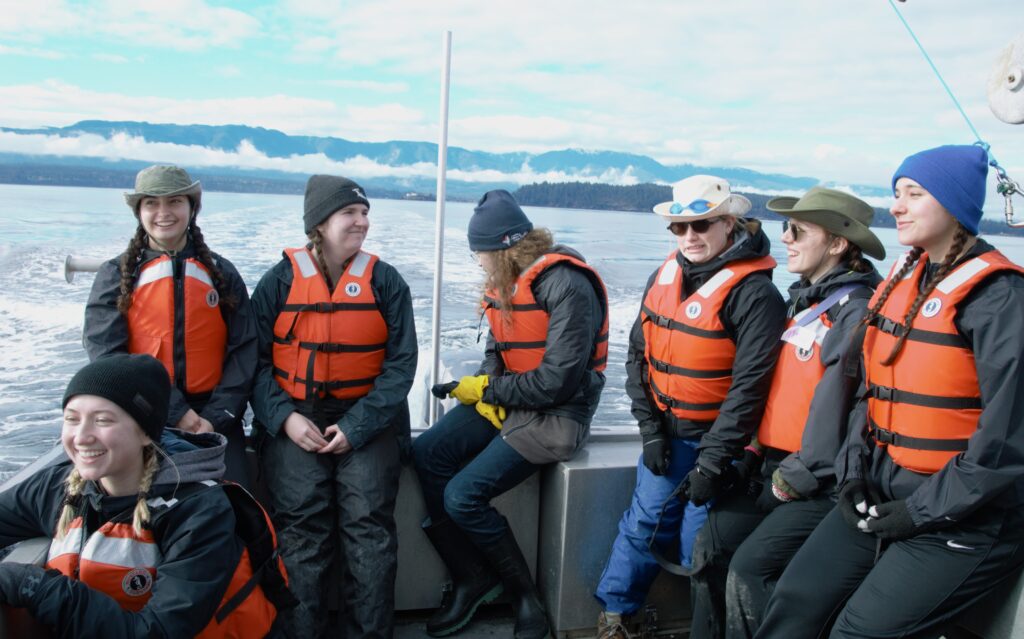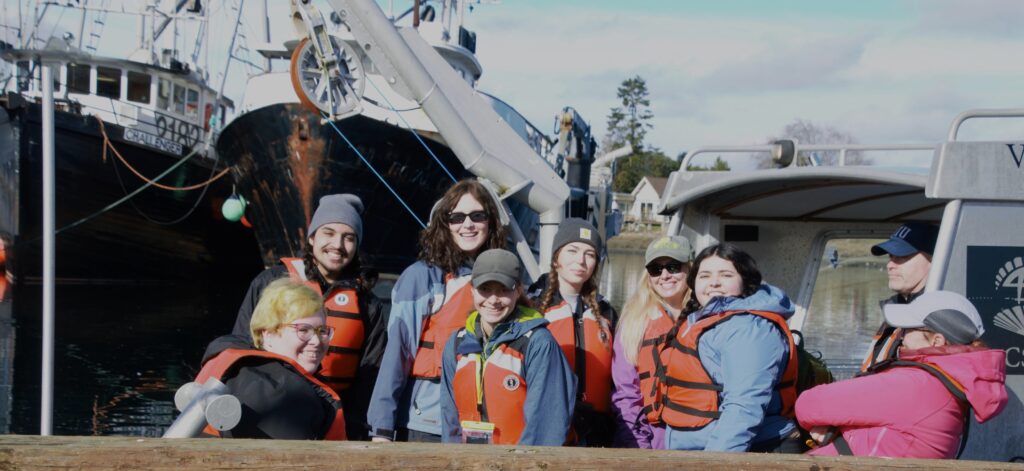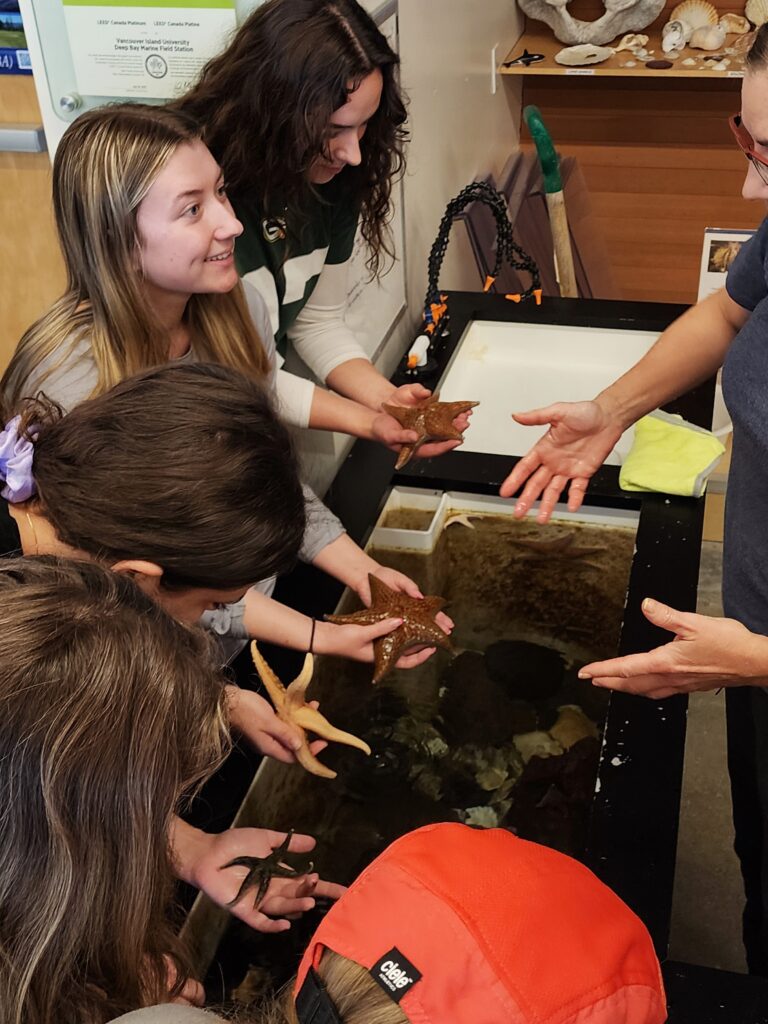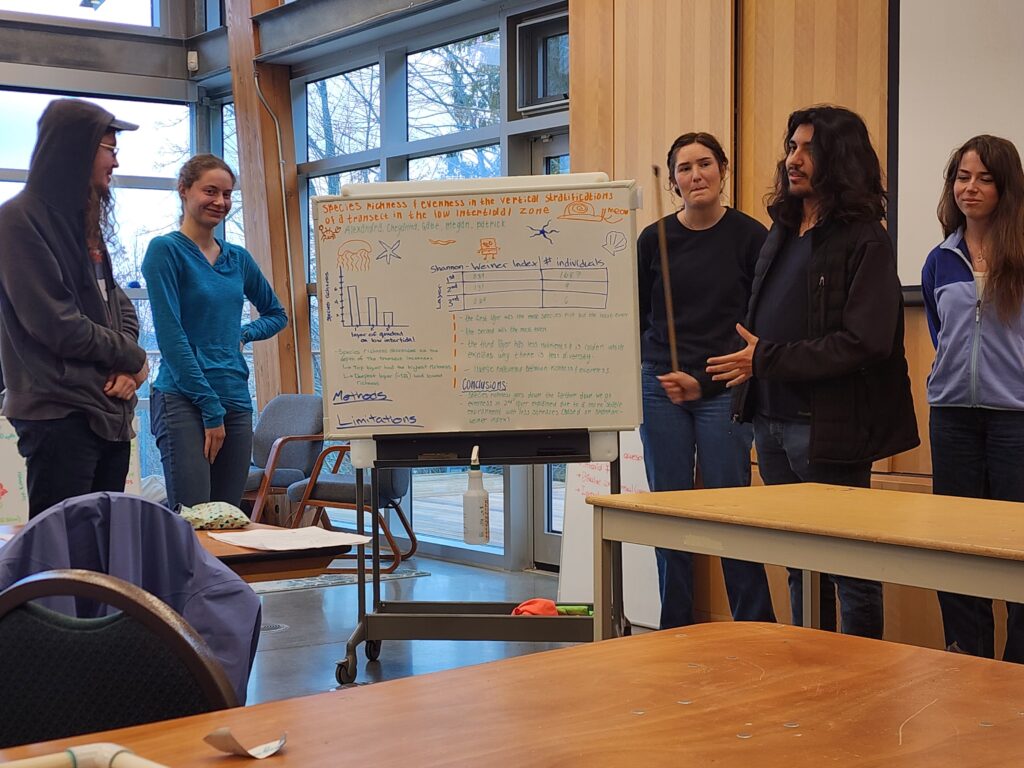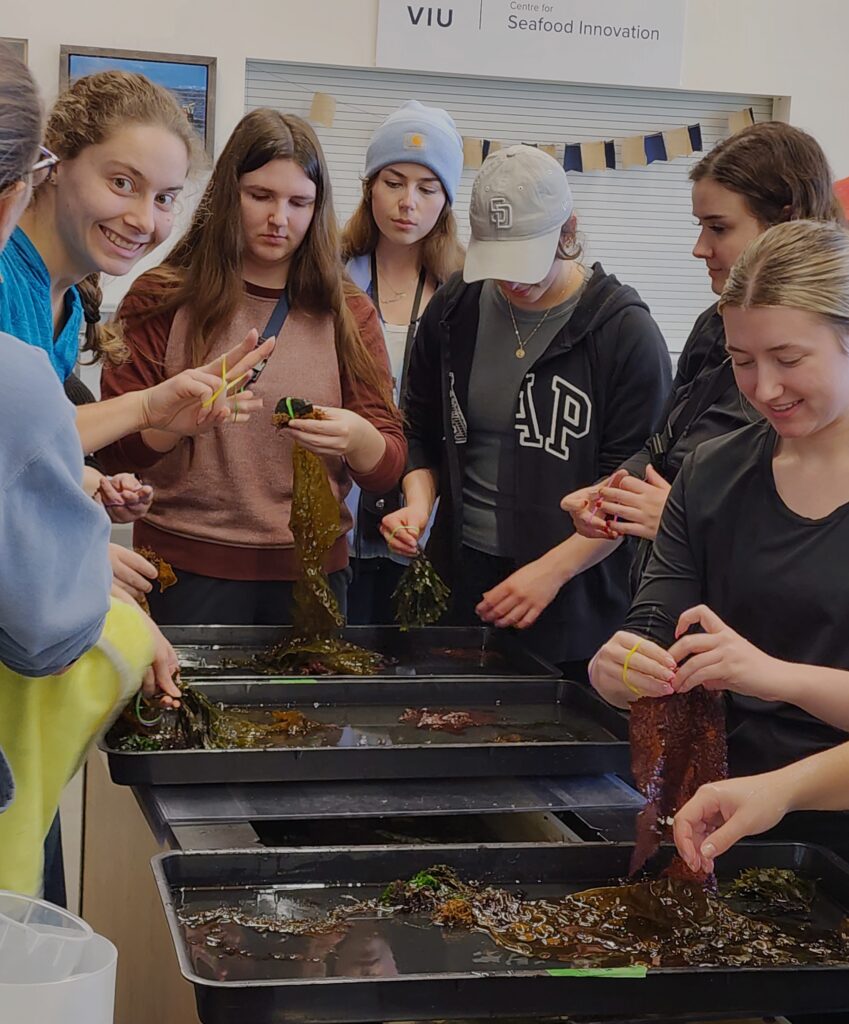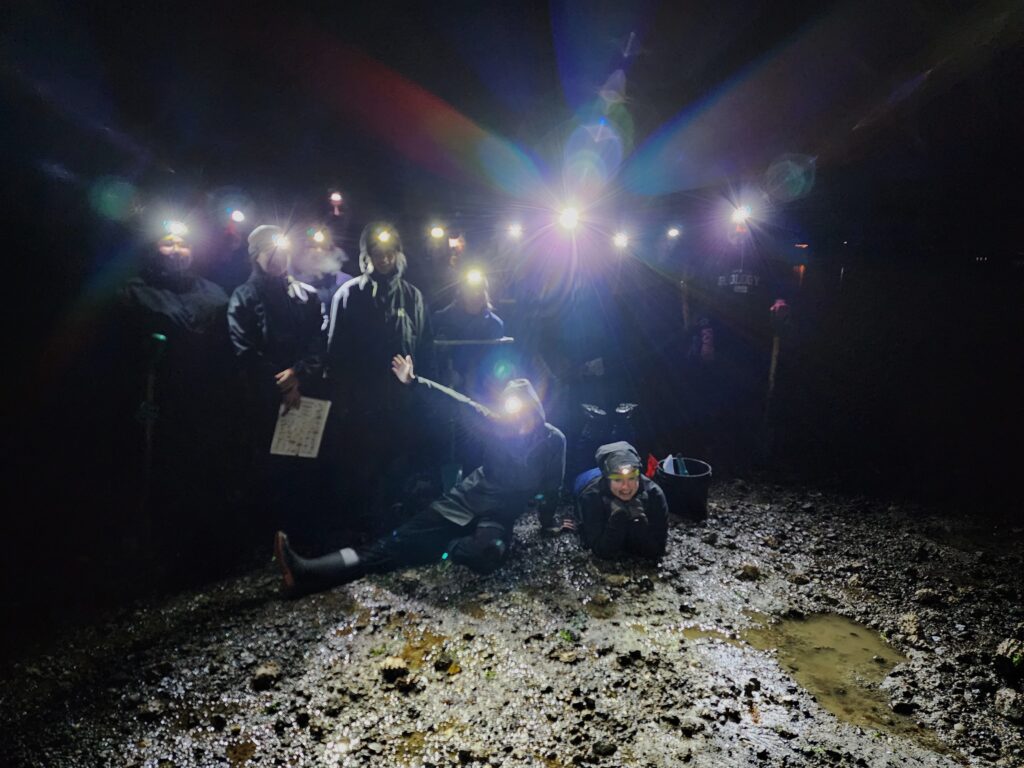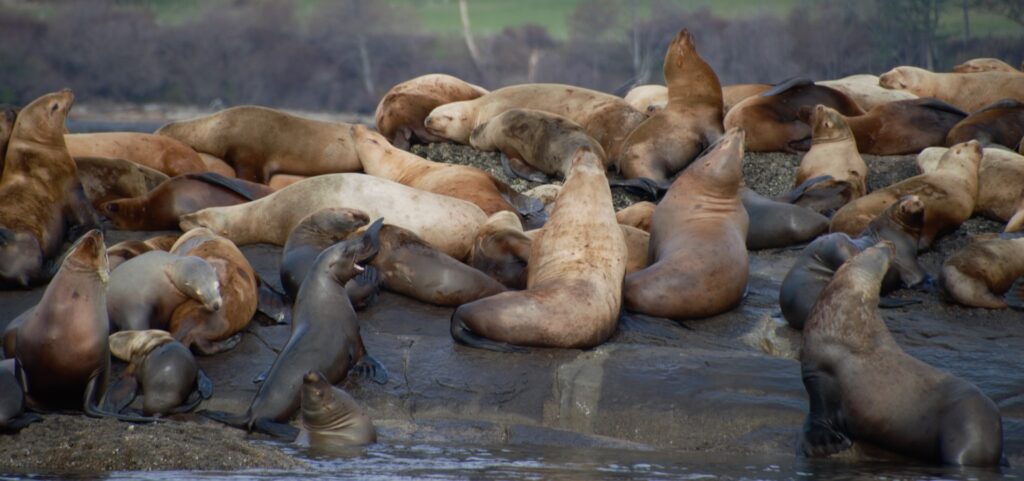From February 19 to 24, the Marine Biology Field School (BIOL 317) students visited the Deep Bay Marine Field Station south of Comox-Courtenay, British Columbia (Vancouver Island). St. Mary’s University students participated in several activities, including the identification and classification of macro and microalgae in the lab, a nighttime assessment of intertidal invertebrate diversity, as well as field collection and identification of plankton. A highlight for all was observing sea lions and seals in their natural habitat.
“This is a unique opportunity for students from (landlocked) Alberta to get hands on experience in marine biology,” said Dr. Mason Kulbaba, Assistant Professor, Biology at St. Mary’s University. “Students get direct exposure to current techniques of sampling and analysing data with experts in the field.”
While on site at Deep Bay, St. Mary’s students performed an inter-tidal assessment by documenting marine diversity along a transect (straight line that cuts through a natural landscape). This included a vertical assessment that involved carefully digging into the exposed substrate at low tide, to determine how marine invertebrates are vertically stratified.
The students also compared plankton diversity in open water with a sein net vs. benthic plankton diversity with an Eckman grab. This involved collection, careful identification under a microscope, and quantifying the findings in terms of diversity metrics. Finally, students identified and classified 15 species of macroalgae to construct an identification key.
“The hands-on learning aspect is absolutely critical for a field course,” explained Dr. Kulbaba. “Being in the field and personally collecting data cannot be substituted in a lab simulation or supplied dataset. The investment made by the students is clear from the effort put into their projects.”
The integrated learning opportunity at Deep Bay is one of several hand-on educational opportunities for St. Mary’s students, allowing them to take their knowledge from the classroom and apply it to the world around them in a multitude of different locales and scenarios. Classes also travel to Belize and Rome as part of St. Mary’s commitment to providing practical integrated learning opportunities.
